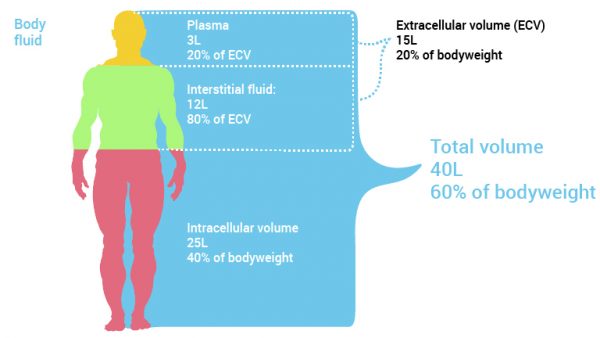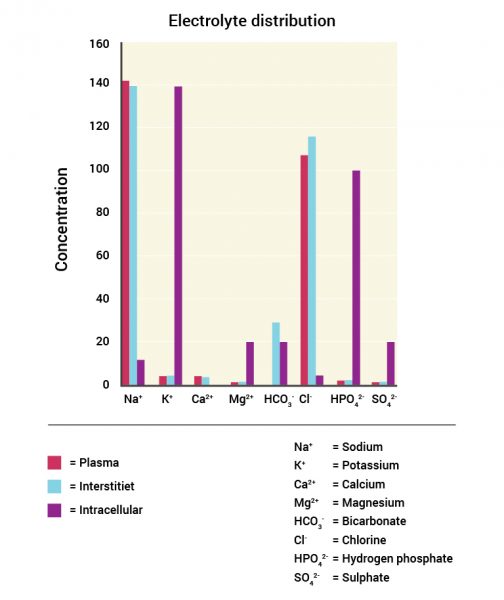This chapter provides a simple and clear description of the body’s water and salt levels, and their regulation. This first section will give you the overview, Thereafter we cover the detailed renal handling of water and salts (Chapter 2) and acids (Chapter 3).
Learning Outcomes
After studying this chapter you should be able to:
- describe various body fluid compartments and their relative content of sodium, potassium, calcium, chlorine and proteins
- provide an explanation of the body’s regulation of water balance
- provide an explanation of the body’s regulation of salt balance
- explain the terms dehydration, hypotonic hydration and oedema
A male body of 70 kg contains about 40 liters of water. It constitutes about 60% of the body weight. 25 litres of this water is stored in the intracellular space (inside the body’s cells) and thus constitutes 40% of body weight. The remainder, about 15 litres, is located in the extracellular spaces, outside the cells, and represents 20% of body weight. The extracellular space comprises about 20% blood plasma and 80% of interstitial fluid.
The body fluids, regardless of location, contain large amounts of dissolved substances: various salts, sugars, amino acids, fat and other substances in smaller amounts. The distribution of these substances varies in the different fluid compartments. The levels of the various salts are relatively similar in both plasma and extracellular fluid. On the other hand, Figure 2 shows that the distribution of the various ions are very different between the extracellular and intracellular fluid compartments. The level of sodium (Na+), chloride (Cl–) and bicarbonate (HCO3–) is much higher in extracellular compartments compared to intracellular. The opposite is true for potassium (K+), magnesium (Mg2+), sulphate (SO42– ) and hydrogen phosphate (HPO42- ). This distribution of ions is important, for example for membrane potentials, nerve impulses and muscle contractions to function normally. Therefore ion levels (in particular Na+ or salt levels) in the body are carefully regulated. The same is true for the fluid levels. If the body loses water, the salt concentration in the body will increase. Salt and water balance are closely linked.





